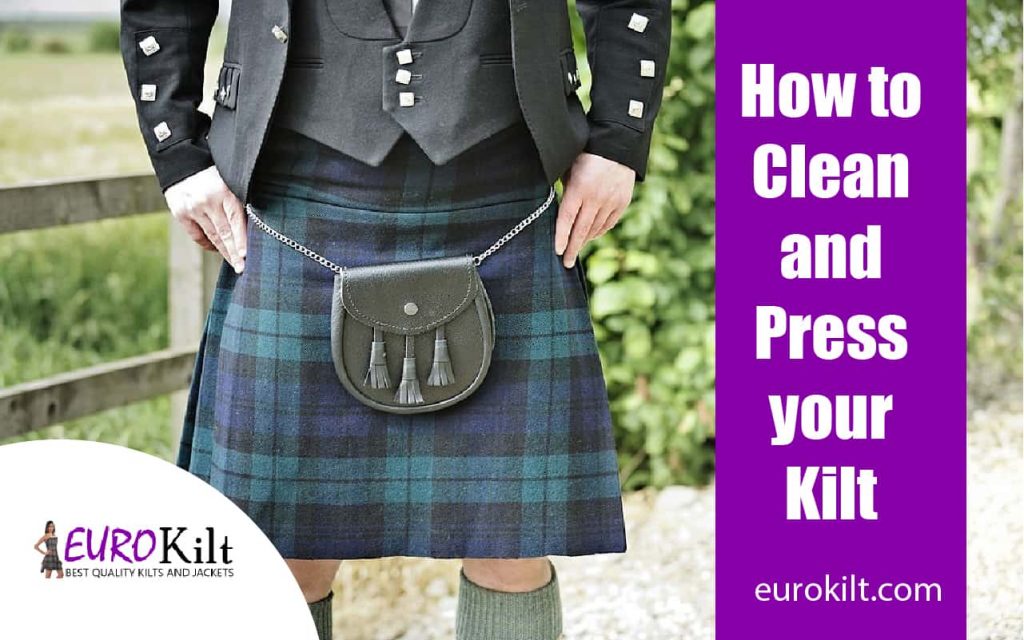Best Kilts For Men And Women
How to clean and press a kilt
You should always air out your kilt after use, preferably outside for about an hour, maybe longer, especially if you’ve worn it in a smoky environment.
Hand wash instructions for washing the kilt
- Kilts and jackets have buttons, zippers and chains, So avoid washing in automatic or manual machines. Hand washing is the best way to wash this garment.
- If you are unlucky enough to spill something on your kilt (heaven forbid), then it is necessary to intervene immediately and remove the spot.
- Dabbing the spot with a cold, damp cloth (don’t use paper towels) should be enough, don’t rub it as it will remove the spot.
- Use only cold or lukewarm water at most, and if you feel you must use detergent, a particularly fine woolen one is recommended.
- Just soak the kilt in water for a few minutes, do not move or rub the kilt, as this will damage the wool.
- For the best wash, use the highest quality detergent. Many fake or substandard cleaning products are on the market, but they can harm clothes.
How to hang and dry
- You would then hang it up to dry naturally (this can take two days or more, depending on the weight of the wool). Once dry, you will need to press the folds very carefully.
- After washing the clothes, dry them by hand using a line. There are automatic dryers, but they are good for trousers and shots, kilts for sale and jackets.
- It should always be hung on a kilt hanger with enough space on either side to ensure that the pleats hang straight and are not pinched by other clothing items.
Ironing A Kilt
A kilt will rarely need ironing. Any slight creases should fall out after a few days of hanging, especially if hung in a steamy atmosphere.
If you feel your kilt needs ironing, here’s what to do.
- Set the iron to steam and place the kilt apron on the ironing board with the underside facing you. Place an ironing cloth over the fabric to protect it and place the iron lightly on the fabric.
- Don’t iron back and forth – place the iron on the fabric, lift and place on the next section.
- Never iron the wool on the right side, as this can leave shiny marks on the wool.
- The folds of your kilt rarely need pressing. We recommend waiting until your kilt is professionally cleaned to steam your pleats.
Make sure you use a cool iron on the wrong side of the fabric. Be careful to straighten the folds and not let them fall off the ironing board. Consider enlisting the help of a friend to lift your creases.
Conclusion
Your kilt is probably one of the most expensive clothing items in your wardrobe, and proper kilt care is essential to ensure it lasts a lifetime and beyond.
FAQs:
How to temporarily transport a kilt?
Temporarily transporting your kilt by car, hang your outfit in a protective carrier from the suit hook.
How to transport over longer distances?
When travelling long distances, consider rolling the kilt to save space and minimize the need for ironing.
How should the tilt be worn loose or tight?
Always carry the tilt loose and never carry it tightly.
How to properly store a kilt?
If you are storing the kilt for a long time, always use a quality hanger that secures the kilt along the entire upper part.
For short-term storage, use a steel Kilt hanger. Avoid sagging by always joining the front and back of the scottish kilt together.

